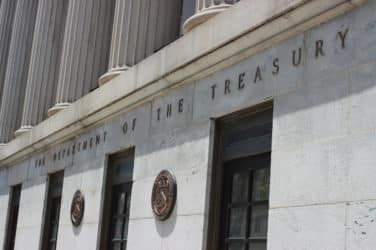

The Canton Network and QCP are collaborating to create onchain collateral and margin management for bilateral derivatives, while Bitnomial has launched a US regulated clearinghouse for digital asset derivatives traded on its own exchange.
On 16 January 2025 the Canton Network said in a statement it had initiated a project in partnership with Digital Asset, QCP, and a select group of their counterparties to create onchain collateral and margin management solutions for bilateral derivatives.
The Canton Network said it is the financial industry’s first and only public chain that can achieve on-chain privacy, control, and interoperability making it the most suitable network for institutional assets. It was initially built on technology from Digital Asset, the enterprise blockchain provider and the network’s controls, governance, and app development have been open-sourced and decentralized.
Melvin Deng, chief executive of QCP, one of the first digital asset trading firms in Singapore and a global market maker in digital asset derivatives, told Markets Media that capital efficiency is crucial and well-practiced in traditional finance.
“In the world of crypto derivatives, simple things like prime brokers who centrally clear transactions have not been forthcoming, so many institutions have sat on the sidelines,” he added.
Eric Saraniecki, co-founder and head of network strategy at Digital Asset, told Markets Media that improving collateral mobility and capital efficiency will be material for organisations, in addition to improving workflows. He said: “This is low hanging fruit to enable firms to trade more frequently.”
QCP wanted to collaborate with Canton Network to bring forward what the firm sees as the future of finance.
“Everyone has a vision of being able to portfolio margin across all digital and traditional assets,” said Deng. “Bringing that about in a way that fulfils regulatory requirements and ensuring everyone is confident at each step is vital, so we spend a lot of energy in picking partners who share our vision of the melding of two different financial worlds.”
Existing bilateral markets are often fully or over-collateralized, while the the lack of automation requires the use of tri-party agents for collateral management, which adds extra cost. The collaboration aims to create an onchain global collateral network, with seamless and secure connections across trading venues, brokers, investors, and financial market infrastructures. Smart contracts can be used onchain for automatic execution and enforcement of contracts in accordance with the industry standards in the ISDA CSA initial and variation margin documentation.
Saraniecki highlighted the importance of Canton Network’s privacy capabilities, which is critical for institutions carrying out large over-the-counter trades. He said: “Privacy is programmable so it is guaranteed that only the people who need to know information have access.”
For example, the separate data requirements for traders, central securities depositories and auditors can be programmed onchain. Saraniecki used the analogy that everyone who uses an internet browser does not have access to everyone else’s bank account details.
The ability to provide onchain collateral and margin management will allow for 24/7 margining regimes, in line with 24/7 digital assets markets, shorter margin cycles such as a few hours, and the use of stablecoins and tokenized real world assets in the Canton Network as collateral. Stablecoins have been used in digital finance to transfer value and liquidity 24/7/365 seamlessly around the globe, in contrast to a fiat currency such as the US dollar that is used in traditional banking. They are backed by collateral to maintain a stable price over time by pegging value to a reference asset such as a fiat currency or a commodity.
In January this year Circle said in a statement that it is planning to deploy its USDC stablecoin on Canton. Circle said that offering native USDC integration will enable a seamless and 24/7/365 convertibility between collateral and cash for use in traditional finance markets onchain.
Deng noted the technological challenge with regards to the speed at which institutions can manage their credit margin in volatile crypto markets. He added: “Tokenized collateral is one piece of this jigsaw as it brings earlier finality for settlements which improves confidence in credit mitigation, and we see some banks looking into this.”
In January this year QCP said it executed the first derivatives trade using a tokenized fund from BlackRock as collateral. BlackRock launched its USD Institutional Digital Liquidity Fund (BUIDL) on the ethereum blockchain in March 2024 in partnership with Securitize, the real-world asset tokenization platform. BUIDL invests in cash, US Treasury bills, and repos.
We’re proud to be the first designated market maker for #BUIDL (@BlackRock) and to execute the first BUIDL-collateralized derivatives trade with @Securitize Credit.
Now available to institutional clients, this solution unlocks enhanced yields and portfolio efficiency.
Read… pic.twitter.com/JMDq6U2MOU
— QCP (@QCPgroup) January 9, 2025
“Our Blackrock BUIDL derivative is the start of professional collateral as Blackrock brings scale, liquidity and confidence to the market,” said Deng. “They have taken a big step and we are standing on the shoulders of giants.”
QCP believes digital assets will eventually be on every balance sheet – for corporates, institutions, and family offices.
“This furthers our vision that crypto derivatives will be used for hedging, risk management and helping investor returns,” added Deng.
Bitnomial clearinghouse
Dang continued that one of the hardest lifts is creating central clearinghouses, which he believes would accelerate the ability to improve collateral management.
“It requires winning over the regulators to think about credit margining in a slightly different way,” he added. “Transferring securities between banks can take two days to settle on current technology, but on a blockchain the finality is within seconds, which changes risk profiling.”
With the launch of Bitnomial Clearinghouse, traders benefit from substantially lower margin requirements and improved capital efficiency.
Hashrate US Dollar Petahash (HUP) futures have decreased from 45% to 15%, freeing up capital while maintaining risk management standards. https://t.co/0bfrwNVe96
— Luxor Technology 🟧⛏️ (@luxor) February 3, 2025
Digital asset derivatives exchange Bitnomial said in a statement on 3 February 2025 that it had successfully launched Bitnomial Clearinghouse in the US. The firm said this is only the fourth US regulated derivatives clearinghouse to clear physically delivered and margined derivatives contracts.
The first cleared trade was executed between Jump Trading and Luxor Technology, and cleared by Marex Capital Markets.
The launch of self-clearing operations increases capital efficiency, allowing participants to increase trading while the regulated clearinghouse maintains robust risk management standards.
At launch, maintenance margin requirements for Bitcoin (BUS) and Bitcoin Deci (BUI) futures have been reduced from 27% to 15%, and Hashrate US Dollar Petahash (HUP) futures have decreased from 45% to 15%. Inter-commodity spread credits have also been enhanced allowing traders to hold offsetting positions with lower margin requirements.
Brooks Dudley, head of digital asset sales at Marex Capital Markets, said in a statement: “By offering physically delivered and margined contracts, Bitnomial is creating infrastructure that enhances both liquidity and risk management.”








